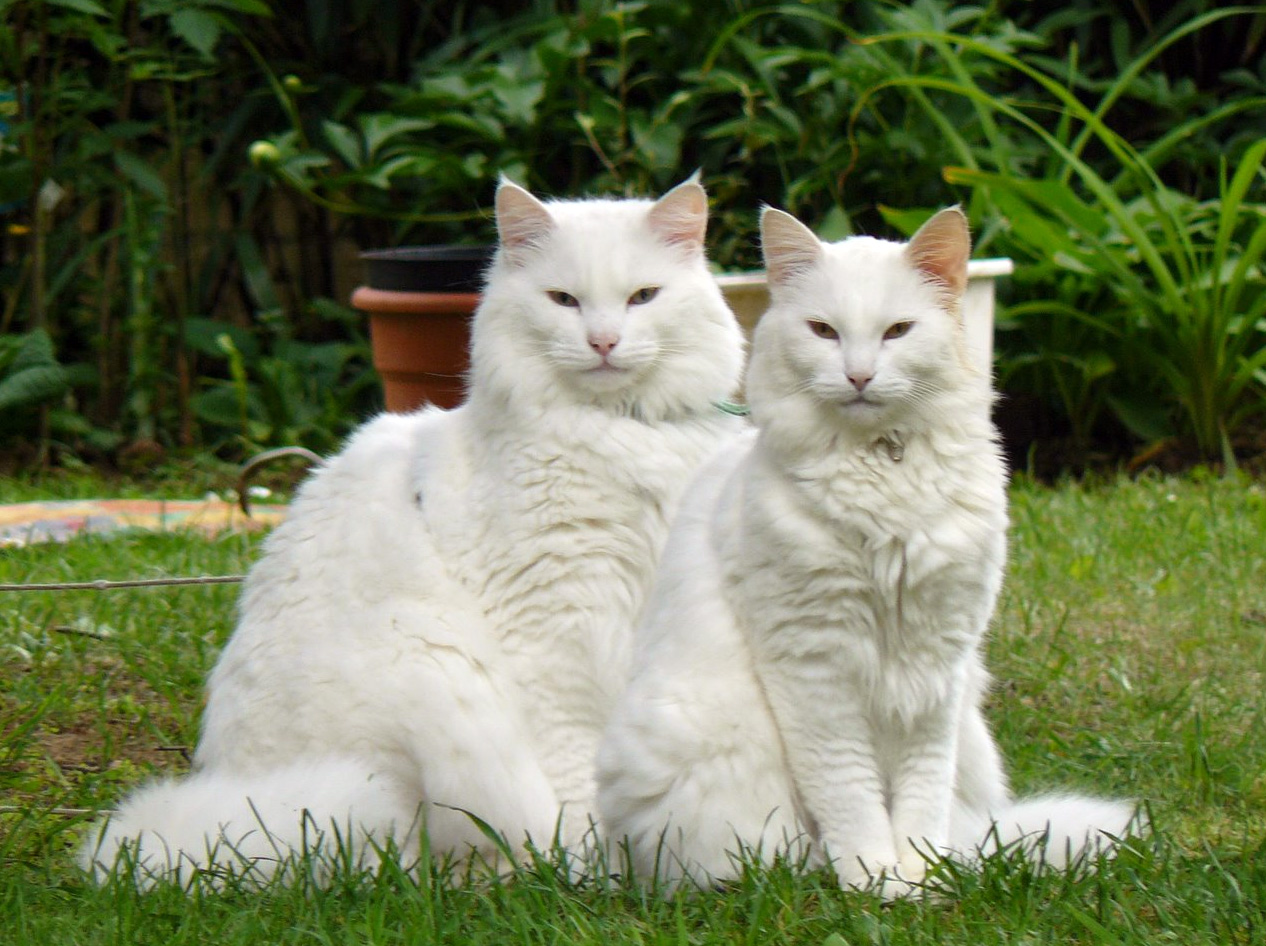Tails
Making pet parenting easy

Norwegian Forest Cat
This entry was posted on 2014-07-30.
Personality and Temperament
Born to be an athlete this cat breed is frisky and inquisitive. Its favorite activity is exploring the house, examining very nook and cranny. Even though it has lived in the wild for years, it much prefers a good cuddle instead of showing aggression. This breed is very loving and has a sweet temperament. It can quickly become accustomed to different environments or unfamiliar people and does not get upset easily. It’s also very vocal and would choose to communicate with its owners frequently and for long periods of time.
Traits
• Other names: Norsk skaukatt or Norsk skogkatt
• Weight: Male: 5.5 - 9.0 kg; Female: 5.5 kg
• Height: Large
• Coat: Double coat, water-resistant, thick, long and wooly.
• Colour: A whole range of different colours, from particolor and tabby to solid white and black
• Litter size: 4 kittens
• Life span: 14-16 years
Physical Characteristics
This cat has a unique figure and double coat. Providing it with great protection throughout winter, its coat is dense, long, and wooly. It has a very well balanced build, radiant green eyes consisting of a strip of gold and a triangular shaped head. These features give the cat a sense of mystery. It has full-figured muscles and a wide chest, demonstrating its strength and power.
Furthermore the Forest Cat can change its coat in accordance to the weather. In the springtime, it molts its dense winter coat and is left with a sleek lighter one. In autumn it will yet again molt its summer coat.
Care
This cat has quite a lot of energy and therefore requires a great deal of exercise, which can be achieved with play. During the molting process you will need to give your Forest Cat a good brush other wise you are going to find clumps of hair strewn all around the house. However it does not require much grooming throughout the rest of the year, just a brush when you feel the need.
History and Background
The Forest Cat Originated in Norway. Thousands of years ago the cats seems to have appeared out of the Scandinavian forests and were similar to the long-haired, large cats spoken about in Norse mythology. There is even evidence stating that the cat was seen on the boat of Leif Erikson, a well-known Viking voyager. On the boat the cat was used for rodent control and companionship.
The extremely cold and bitter weather conditions of Norway allowed the Forest Cat to develop strong characters, long, thick, water-repellent coats, a well-developed survival instinct and wisdom.
The first attempt to get this breed recognized was in the 1930’s. In 1934 the first Norwegian Cat club was created. The first Norwegian Forest Cat to be showcased was in Oslo Norway. The World War II brought devastation to this breed and almost wiped it out. Crossbreeding the Forest Cats with Norway’s short-haired domestic cats (named Hauskatt) endangered the bloodlines. When the war finally ended Norway’s cat breeders started a breeding program. Soon after the late King Olaf dubbed the cat the official cat of Norway.
In 1980 thanks partly to the Norwegian Forest Cat Fanciers Association who’s hope was to get it officially certified, the cat was brought to the United States. The first cat association to recognize the breed was the International Cat Association and later in 1984 allowed the cat to compete in Championship competitions. Later the cat declared championship status in 1993 for the Cat Fanciers Association and in 1995 for the American Cat Association.
Nutrition
Click here to see what cat food we sell now.


